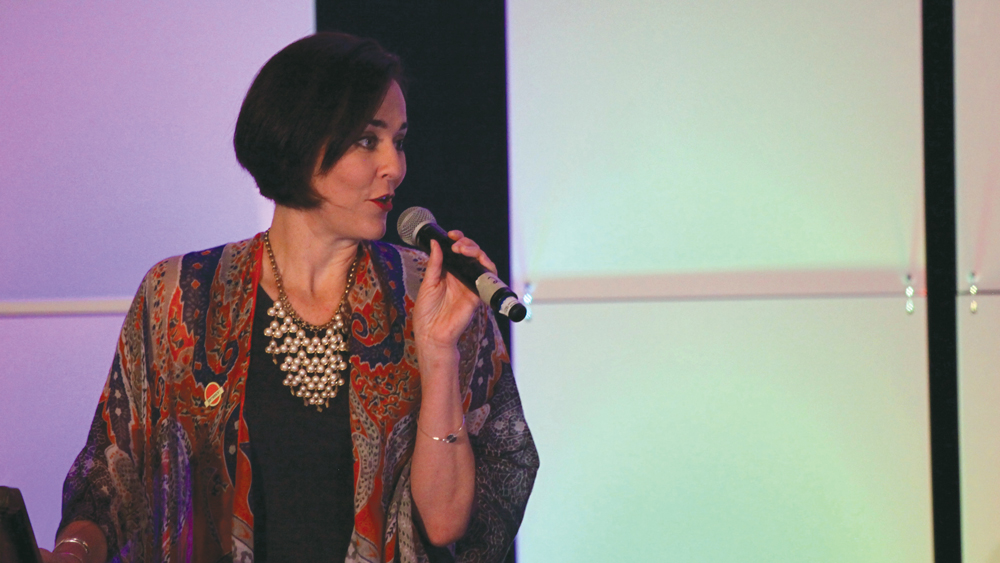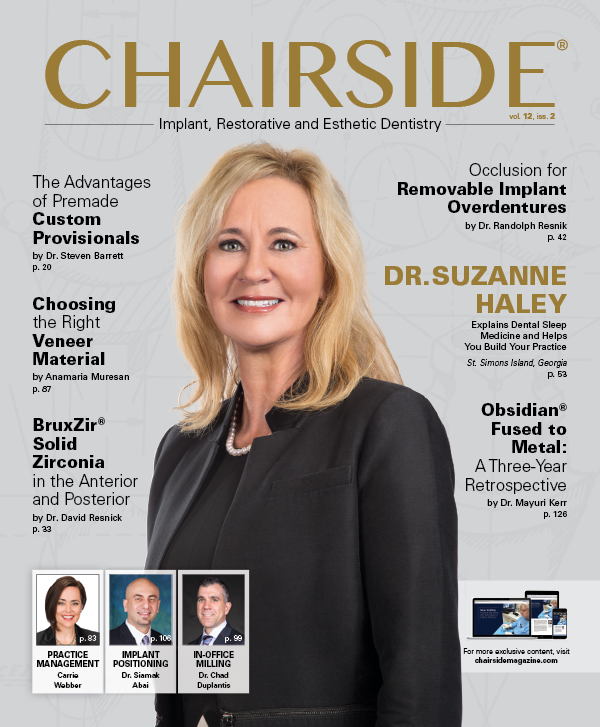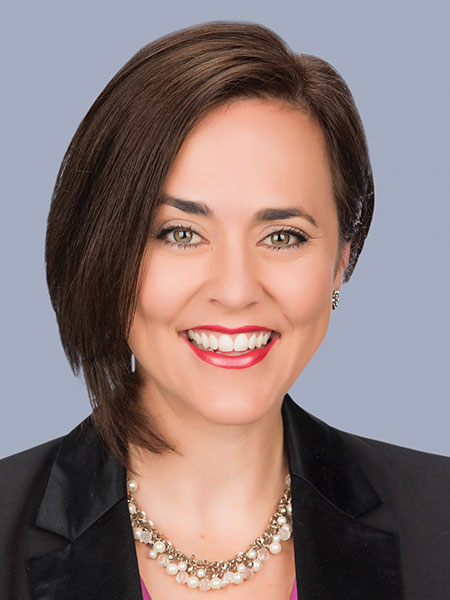Presenting Large Cases: Making Use of Time, Tools and Space
As we work with dentists and teams across the country, we often focus on helping and developing each member of the team to become more effective and successful at presenting dental treatment to patients. When establishing a case presentation or a new patient experience system for your practice, we place strong emphasis on:
- Building relationships with your patients
- Establishing the need for the dentistry
- Educating and motivating patients
- Asking for a commitment from patients
- Having the tools and skills to make healthy financial arrangements
- Scheduling the appointment for the treatment accepted
This may seem like a nice, simple road map for the smaller, more attainable treatment plans, but what about when you begin to plan and present large cases?
I often talk with my Jameson advisor team about what obstacles they see practices experiencing when it comes to case presentation and case acceptance. The main issues seem to stem from inconsistency and lack of focus and skill when it comes to communicating with, educating and motivating patients to move forward, especially when the treatment comes with a large price tag.

The dentists who have impacted my life the most over the years have taught me powerful mantras for presenting and communicating large cases to patients: master the verbal skills, set aside sacred time in a safe space, and invest in and maximize your technological and financial tools.
1) MASTERY OF VERBAL SKILLS
My father, Dr. John H. Jameson, a retired dentist, took a small-town dental practice and made it an extraordinary restorative and esthetic dental destination. When asked what the one thing is that he recommends a practice focus on to improve case acceptance, he always says, “Mastery of verbal skills.” You must determine the conversations that bring meaning to and impact your patients and the trajectory of their dental care. Then, work on your ideal approach to communicating, asking questions and listening to your patients in those scenarios. And, last but not least, you must practice!
You must role-play as a team, practicing the scenarios and verbal skills with each other again and again. This way, when you are face-to-face with a patient, those conversations will be more comfortable and come naturally, and you will be able to uncover the kernels of truth that reveal what your patients want most in their dental care. Those much wiser than me have said it many times, in many ways: “It’s not what you know; it’s what you ask.” Meaningful conversation is the cornerstone of a beautiful practice-patient relationship.
2) SCHEDULING SACRED TIME IN A SAFE SPACE WITH NEW PATIENTS
In 2016, CareCredit® (Synchrony Financial; Stamford, Conn.) conducted a survey where nearly half of the respondents said they cannot afford out-of-pocket costs of $1,000 or greater.1 What does that mean for your $10,000 or $20,000 treatment recommendations? Does it mean that the patient will say no? Not necessarily. It does mean that you and your financial coordinator need to have the private space and the appropriate amount of time and tools — including financing options, visual aids, knowledge of dental benefits, communication and listening skills, and confidence in the treatment and the fee — to be able to talk through all of the obstacles, emotions and details of helping your patient make this treatment a reality.
Do you have a private consultation space where you can discuss large cases in a way that is professional, safe and comfortable for your patients? If you present large cases, this is a crucial space to consider identifying in your practice. Privacy is limited in many facilities, and more often than not, the dental chair is a space of anxiety for your patients. You are discussing two very intimate zones for your patient in these conversations: their mouth and their pocketbook! Honor that conversation for what it is, and honor your patient with the time and space to make a healthy, happy decision.
“Sacred time” is a term Dr. Mark Hyman, a longtime Jameson client, uses when discussing his new patient experiences in his practice. I love this term because it plainly describes that this time is invaluable when presenting cases. While it may be difficult at first to see all of that productive time being set aside for Mr. New Patient, the value is easily seen when you have the time to develop a relationship with the patient by asking appropriate questions, truly listening, and walking them through the decision-making process. It is a risk worth taking every time.
Find the sacred time in a safe space, and your patients will respond, remember, return and more than likely refer.
Value is easily seen when you have the time to develop a relationship with the patient by asking appropriate questions, truly listening, and walking them through the decision-making process.
3) INVEST IN AND MAXIMIZE YOUR TECHNOLOGICAL TOOLS
Both Drs. Jameson and Hyman will tell you in any and every conversation about tools for case acceptance that the use of intraoral cameras on every patient is a nonnegotiable piece of their case presentation and patient education process. Not only are you able to tell your patients what is happening in their mouths, but you are also able to show them. A majority of the population considers themselves visual learners; therefore, if you choose not to utilize visual aids in your presentations and education, you are ignoring one of the best methods of absorbing, filtering and retaining information!
Not enough can be said about how powerful intraoral cameras are post-presentation. When patients with diagnosed but untreated dental problems come back for their regular hygiene visits, your high-performing hygienists will be able to use this visual tool to revisit the areas of concern, show and support the benefits of proceeding, note the risks of not proceeding, and also provide the doctor the opportunity to revisit the diagnosis when he or she is examining the patient. This is how you start to see 40–60 percent of your restorative work coming out of your hygiene department. Hygienists’ roles in case acceptance are expanded in countless ways when they have this tool on hand and when they have the time to use it.
4) MAKE HEALTHY FINANCIAL ARRANGEMENTS A PRIORITY
You can go above and beyond in your case presentations through visual aids, excellent communication skills, and giving all the time and space in the world, but if you can’t help patients find a way to pay for it, it is all for nothing. Offering a variety of ways for your patients to pay for treatment is key, and effectively implementing patient financing programs can make all the difference. Having a financial or treatment coordinator who is comfortable with discussing fees, understands the options you have available, and excels at communicating and personalizing the best path forward for your patients will take you to the next level of treatment acceptance. As the CareCredit study shows, your patients will likely need assistance once the investment hits a certain level, so what are you doing to help make that path forward as comfortable and as easy as possible?
Offering a variety of ways for your patients to pay for treatment is key, and effectively implementing patient financing programs can make all the difference.
What is your vision for your practice? If you plan on building your practice into a comprehensive restorative service provider, I encourage you to take a look at your schedule, tools, facility and skills, and identify where you can make even the smallest of improvements in the coming months. In doing so, you will increase your ability to help patients see and feel the value and urgency of the treatment presented.
References
- ^CareCredit Healthcare Financing [internet}. Orlando: Synchrony Bank; c1987–2017. Cost barrier may cause individuals to delay health or dental care; 2016 Mar 23 [cited 2017 Aug 7]; [about 2 screens]. Available from: https://carecredit.com/newsroom/cost-cause-patients-to-delay-health-or-dental-care



